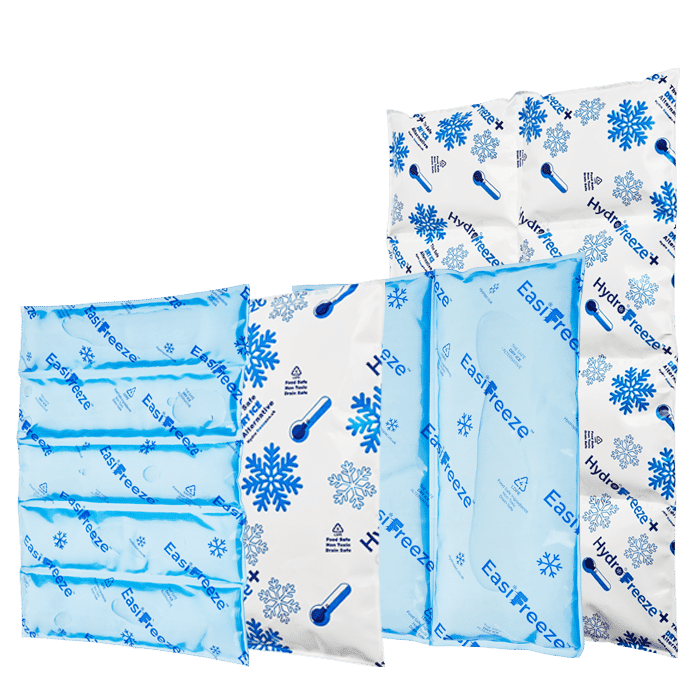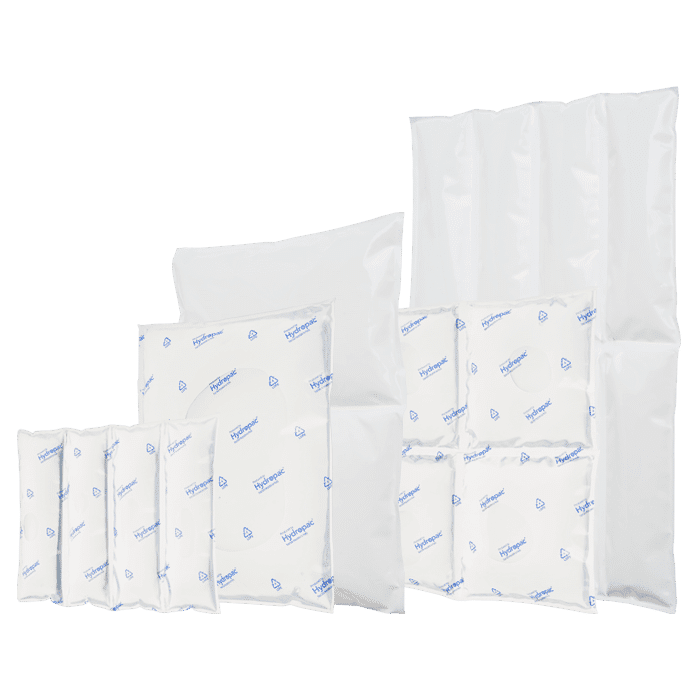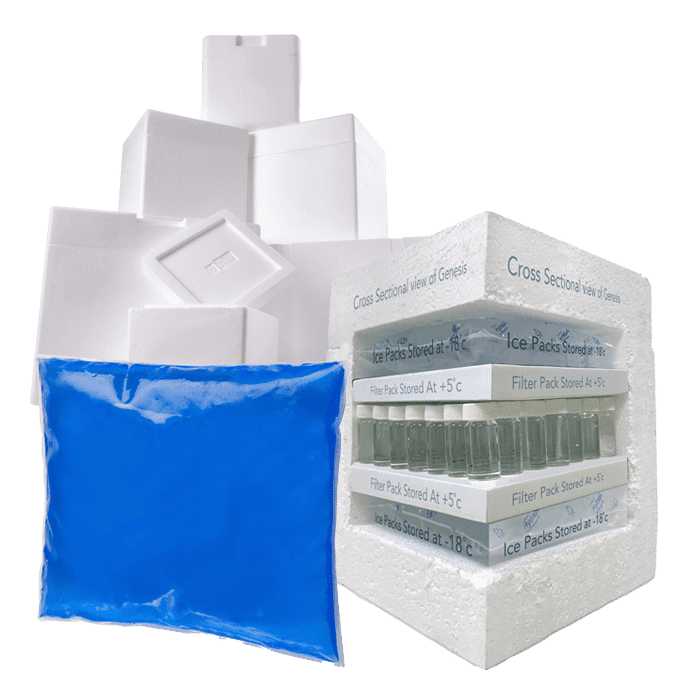Ice Packs Explained
We talk a lot about our range of ice packs, both water and gel, but not everyone actually knows what this term means, or what makes up a high quality ice pack.
What are ice packs?
Ice packs are, in their basic form, a bag or pocket full of a solution that can be frozen down to provide a cooling solution for many purposes. Some are single use, and others are reusable; the reusable type are much better for the environment.
What is inside?
There are 2 primary types of ice pack: water and gel.
- Water ice packs – these have a pure water formula inside, which is filtrated and treated to be food safe for food shipments.
- Gel ice packs – these have a plastic poly gel and water formula inside – they are not as eco friendly as pure water but tend to last a little longer in terms of frozen duration. The gel formula also ensures the ice packs retain a more uniform shape than water.
“Soak and Freeze” ice packs
“Soak and freeze” ice packs require soaking in fresh water before they can be frozen. The strips are dehydrated, and this soaking process rehydrates them.
We do not manufacture or sell these, as they tend to be less reliable and stick to each other once frozen.
Custom chilled solutions for you
Hydropac offers every customer a customized solution for chilled and conditioned shipping. For example, we help a customer with limited freezing capacity to deliver gel packs frozen and ready to use, and we can manufacture almost all shapes and sizes of cooling elements. As a customer, you come first: we are here to help you.
Ice pack shapes
The traditional shape for an ice pack, regardless of its contents, is a rectangle. Each is made of varying numbers of pockets, each filled with the coolant solution inside. These should be filled to the capabilities of the outer material of the ice pack.
Our “seal through liquid” technology ensures that both our water and gel ice packs are filled the capacity each time.
The reason for this is so they can be easily laid flat or bent as needed around the contents of the shipment.
Ice packs can also be made into different shapes if desired.
Ice pack sizes
Again, this varies and the best way to consider what you need is to look at how big your shipment is. If you are sending something small, then 1 or 2 pocket ice packs may be the best option.
Larger shipments will need larger ice packs; we sell water and gel ice packs up to 8 pockets.
Quality control and safety procedures
For ice packs to be considered food grade safe and compliant, they must undergo certain QC and safety procedures. We can’t speak for other manufacturers, but when it comes to our ice packs (water and gel), we undertake the following:
- 3 Stage Filtration System
- UV light Sterilisation
- Chlorination control
- Every batch sent for independent microbiological testing.
Leakages
One of the most common questions we are asked is whether water ice packs might be a higher leak risk than gel. The answer to this is no – all our ice packs are burst strength tested to 200kg.
How long do ice packs take to freeze?
This varies depending on the ice pack in question. Water will always be quicker than gel, however different gel formulas also take different times.
For example, EasiFreeze ice packs freeze down around 33% quicker than Hydrofreeze+ ice packs. However, EasiFreeze is designed to hold shipping temperatures of -16°C, whereas Hydrofreeze+ is designed to hold shipping temperatures of -21°C.
More information on HydroFreeze+ and EasiFreeze can be found here:
We also sell a “pre frozen” ice pack range, to reduce the amount of time our customers have to wait before they can send their ice packs on to the end customer.
Recycling information
We can’t speak for our competitors, but our range of Ice Packs (both gel and water) are made entirely of LDPE material which is recyclable at specialist recycling plants.
- For water packs, don’t forget to empty the water contents down the drain or even water your plants with it – remember, our water is the purest there is, your plants will love it!
- The gel however cannot be disposed of down the sink, it will need to be disposed of in your general waste! Please check your local authority if they collect LDPE. If not, you can dispose LDPE at your local supermarket plastic bag collection points.
Sustainability Hydropac and CSR
Sustainability isn’t just a trend for us – it’s a promise. As we innovate, create, and lead, we keep our planet’s well-being at the forefront. With Hydropac, you’re not just preserving the quality of your cargo; you’re contributing to a healthier world.
Experience the power of sustainable temperature assurance with Hydropac – where excellence and environmental responsibility coexist for a brighter future.




